Additional notes (click to expand)
Medicinal
Lungwort has a high mucilage content and this makes it useful in the treatment of chest conditions, being of particular benefit in cases of chronic bronchitis. It combines well with other herbs such as coltsfoot (Tussilago farfara) in the treatment of chronic coughs including whooping cough and can also be taken to treat asthma The leaves and flowering shoots are astringent, demulcent, diaphoretic, diuretic, emollient, mildly expectorant and resolvent. They are often used for their healing effect in pulmonary complaints and their mucilaginous nature makes them beneficial in treating sore throats. The leaves can also be used externally to stop bleeding. They are harvested in the spring and dried for later use. A distilled water made from the plant is an effective eyewash for tired eyes. A homeopathic remedy is made from the plant. It is used in the treatment of bronchitis, coughs and diarrhoea.
http://www.pfaf.org, https://pfaf.org/user/plant.aspx?latinname=Pulmonaria+officinalis
Nomenclature
Lyte calls it Pulmonaria, lungwort, Symphitum sylvestre or wild comfrey, sage of Jerusalem, cowslip of Jerusalem and our ladies milkeworte (‘because the leaves be full of white spottes as though they were sprinkled with milke’).
Lyte, Henry. (1578). Nievve Herball or Historie of Plantes.
Other use
The hairy leaves covered with white spots resemble the cut surface of a lung, hence the name and its early usage for pulmonary disorders. It was used as a pot-herb (vegetable) and Johnson reports it as good against infirmities and ulcers of the lungs, calling it Pulmonaria foliis Echii or ‘buglosse cowslip’. A hot poultice would be made from the leaves and applied to the chest. Lyte said it was of no use in medicine, but was eaten as a salad. Herbalists muddled it up with comfrey, Symphytum officinale, which has similar flowers. Lyte calls it Pulmonaria, lungwort, Symphitum sylvestre or wild comfrey, sage of Jerusalem, cowslip of Jerusalem and our ladies milkeworte (‘because the leaves be full of white spottes as though they were sprinkled with milke’). Woodville writes that it has no medicinal effect, but Linnaeus (1753) kept its medicinal, historical name when he gave it the name which we still use today.
Oakeley, Dr. Henry. (2011). A Year in the Medicinal Garden of the Royal College of Physicians, revised edition. Royal College of Physicians, London. page 17
link
Geographical distribution
- Europe
Pulmonaria officinalis L.
Family: BORAGINACEAEGenus: Pulmonaria
Species: officinalis L.
Common names: Lungwort
Distribution summary: Europe
Habit: Perennial
Hardiness: H5 - Hardy; cold winter
Habitat: Deciduous woods, scrub, hedgerows, calcareous woods
Garden status: Currently grown
Garden location: Plants of the World (C), Europe & Middle East (J), Display bed (R)
Flowering months: April
Reason for growing: Medicinal


.JPG)
.JPG)

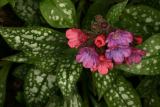
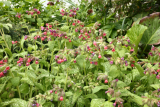
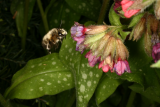
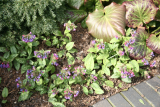

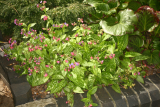
.JPG)
.JPG)

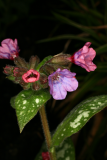
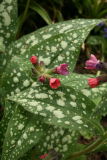
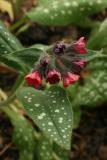
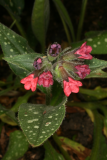
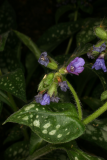
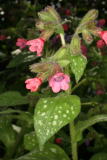
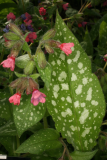
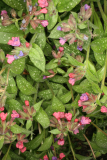
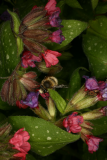
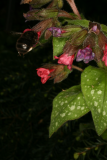


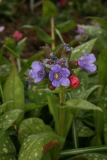
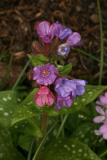
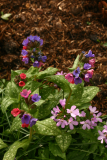
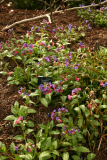
.JPG)
.JPG)